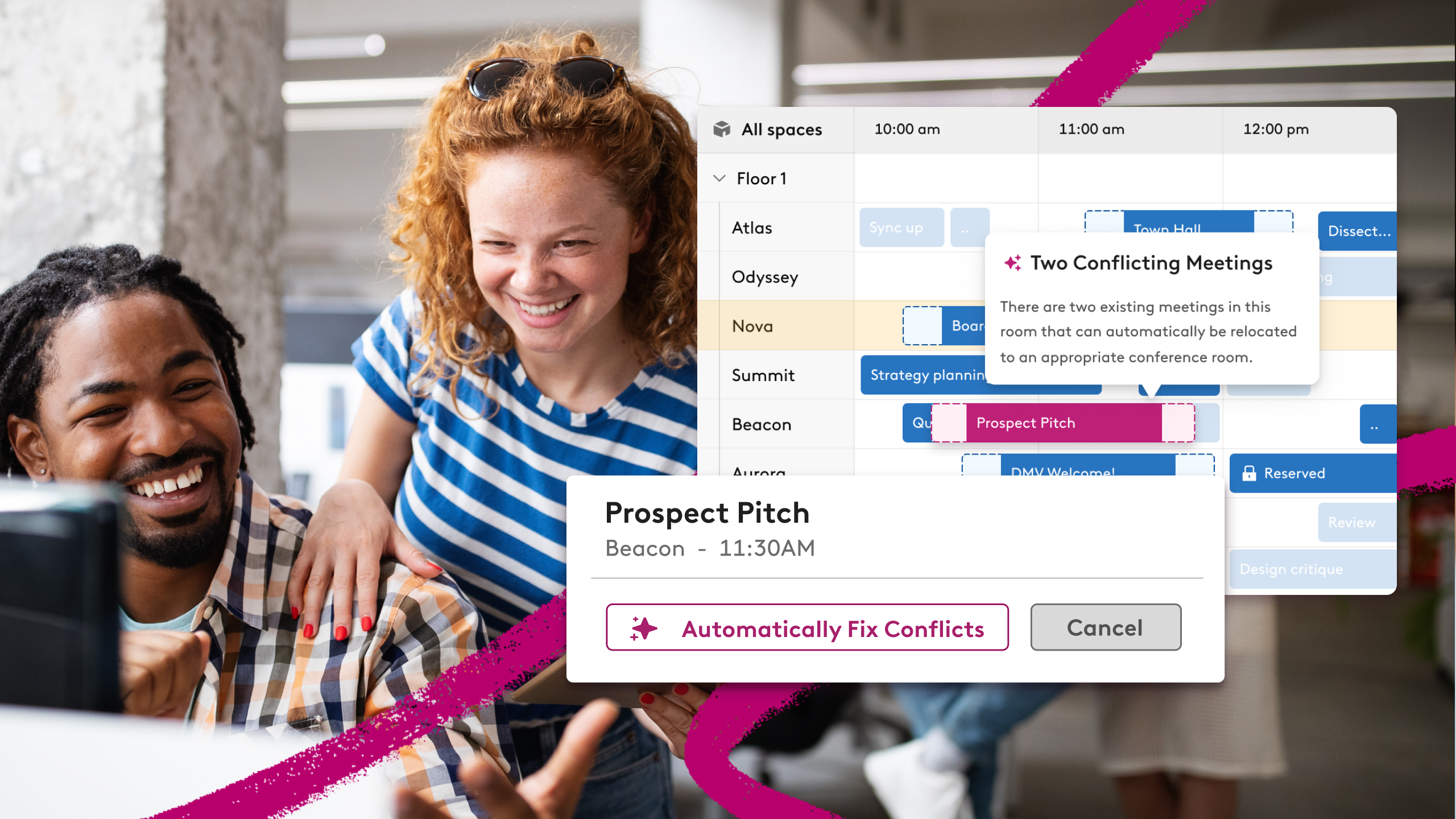Terms you need to know: Employee experience
Employee experience consists of everything a person encounters and observes over the course of their time at an organization. Here are some key terms to familiarize yourself with.

Absenteeist
This type of employee doesn’t come into the office even when they’re expected to be physically present. Absenteeism is often caused by low levels of employee engagement and can be an indication of burnout.
Accessibility
Workplace accessibility is when every employee — regardless of the varying factors of their background or identity — can access and benefit from the systems and investments made within an organization. In other words, accessibility asks, "can everyone get in the room?"
ADA Compliance
Based on the Americans with Disabilities Act (ADA) created in 1990, companies are required to follow specific design and tech regulations in order to create a workplace accessible by all, specifically people with both visible and invisible disabilities.
When most people think about accessibility and an inclusive workplace, the idea of physical access comes to mind.
Can those who need adaptive devices like wheelchairs, walkers, and white canes (probing canes used by the visually impaired) get in and around the office with ease?
Are desks, tables, signage, and interactive screens accessible? Things to consider in the workplace:
- Doors: Doors must be wide enough to allow passage. The ADA requires a minimum of 32 inches clearance for doorways. Heavy doors (those that require more than five pounds of pressure to operate) must be accessible. Automatic doors are an easy solution to this issue. Naturally, be sure the buttons to operate an automatic door are also accessible.
- Desks and tables: Tables should be no lower than 27 inches high, to allow assistive devices to pass easily under, allowing the visitor or employee to sit and work with the desk at a comfortable height. Adjustable height desks are a great way to ensure everyone can get comfortable in their workspace.
- Hallways: Hallways should be wide enough to allow comfortable passage, but what’s under your feet becomes just as important to accessibility. While a plush rug can be attractive and comfortable for some, it can make for slow going and potential falls when using mobility devices. Ramps must have a safe slope percentage and handrails must be available where required by code.
- Screens and digital displays: The world is going digital, which can make information easier to access, provided it’s placed within reach. For instance, digital displays (like those used for Robin’s room display and digital kiosk features) must be installed between within 27” and 80” to remain safe, accessible, and visible for all. Touch screens should be no more than 48” – keeping them within reach for seated users. Screens and enclosures should be installed close to the wall (within 4”) to make them easy to navigate around.
- Wayfinding: Wayfinding signs need to cater to all. In addition to written information, tactile wayfinding (braille lettering) and graphical cues should be incorporated into office design so that the information is accessible for everyone.
Advocacy groups
When it comes to major workplace initiatives -- whether that’s an office move, redesign project, or adopting a new workstyle like activity-based work -- it’s essential to have a group to act as internal advocates for the change. While executive buy-in is essential for a successful workplace transition, having other employees with a better understanding of day-to-day function and a tighter feedback loop to the general employee can help make the change run more smoothly.
Americans with Disabilities Act (ADA)
Created in 1990, the ADA is a civil rights law that prohibits discrimination against individuals with disabilities in all areas of public life, including jobs, schools, transportation, and all public and private places that are open to the general public. The purpose of the law is to make sure that people with disabilities have the same rights and opportunities as everyone else. The law protects the nearly 41 million Americans with a disability, as reported by the U.S. Census Bureau in 2018.
Autonomy
The official definition: the right or condition of self-government. In terms of the workplace, autonomy means employees can work how they want, where they want, and when they want. They "self-govern" how they get their work done, whether that's in the office or out, in quiet areas or open public spaces, through different video or audio technology, messaging platforms, and more..
Chief Employee Experience Officer (CEEO/CEXO)
As company's look to invest more in employee engagement and workplace experience the role of the CEEO/CEXO has risen to address this. CEEO/CEXO are similar to a CMO except the customers in this case are the organization's employees. THE CEEO/CEXO can oversee a workplace experience team and is meant to advocate for the employee in executive level discussions.
Cultural Intelligence
Cultural intelligence (CQ) is the ability to work with or relate to people with varying cultural backgrounds. In a workplace promoting diversity, it's essential for the C-Suite and managers to have high levels of cultural intelligence to help promote an inclusive and equitable workplace experience.
Diversity
In the workplace, diversity is represented by having employees of varying cultural backgrounds. This can include race, gender, age, sexual orientation, socio-economic upbringing, religion, disabilities, personality, education, and more. In today's hiring atmosphere, top candidates tend to value a company that promotes a diverse workforce. In other words, diversity asks, "who is in the room?"
Diversity report
Diversity reports are one way organizations can promote transparency in their efforts towards diversity. Typically a diversity report, breaks down the varying (or lack of variety) in identities and backgrounds within a company.
Employee engagement
Employee engagement, closely linked to employee experience but not synonymous with it, is the extent employees feel connected to their organization. Engaged employees feel a sense of purpose and a high level of productivity at their workplace and tend to be committed to staying with their organization for a while.
Employee engagement vs. Workplace experience
Employee engagement and workplace experience are two terms that can be nebulous but are essential for every company’s success. Employee engagement refers to how well a company retains talent and how product their people are. Workplace experience is how well office design, technology, and culture interact to create an environment employees can thrive in.
Employee experience
Includes everything a person encounters and observes over the course of their tenure at an organization. When it comes to major workplace initiatives - whether that’s an office move, redesign project, or adopting a new workstyle like activity-based work -- it’s essential to have employee buy-in and to collect feedback along the way.
Employee satisfaction survey
Tactics used to measure how well a workplace is fitting employees needs based on self-report responses. This can be completed internally by sending out a survey or by using an external agency specialized in employee satisfaction.
Equity
Equity is typically the final stage when considering workplace diversity, inclusion, and equity. Once a diverse workforce exists where each individual feels included in contributing to the company mission, equity follows when employees feel like they have equal opportunities and are valued equally regardless of their background or identity. In other words, equity asks, "does everyone have what they need to stay in the room?"
Extrovert
Extroverted employees tend to be more outgoing, collaborative and feed off the energy of the stimuli around them. Visual clutter and the fear of missing out on passing conversations can make it difficult for extroverts to focus in an open office setting.
Implicit bias
Implicit bias is an innate prejudice either for or even against something. Typically in the workplace, implicit bias plays a part when people aren't given the same opportunities as others based on their background and identity. Oftentimes in diversity, equity, and inclusion training, employees are asked to consider their own implicit biases and consciously work to overcome them when interacting with their coworkers.
Inclusion
Beyond diversity, inclusion is the next step in creating a more equitable workplace. Inclusion is when all employees feel like contributing members of the company's workforce regardless of their background. In other words, inclusion asks, "has everyone's ideas been heard in the room?"
Intersectionality
Intersectionality is the compound affects of those overlapping identities. For example, a black woman in the workplace could experience disadvantages for being female (pay gap, for example) or because she's black (opportunity gap, for example). However, since she is both black and female, she could experience compounding disadvantages. It's essential to break down and consider the effects of intersectionality when discussing diversity, equity, and inclusion at work and not ask a person to prioritize one part of their identity over another.
Introvert
Making up half the population, these types of employees are more internally focused, tend to keep to themselves and work best when left alone. In an office setting, introverts can struggle with the external distractions associated with open floor plan.
Invisible disabilities
While many disabilities are apparent to outside observers, as many as 10% of Americans live with some form of non-visible disability, and many don’t disclose them to their employer.
Microaggressions
Microaggressions are actions or words with charged undertones stemming from bias against a marginalized group or person. Microaggressions can be intentional or unintentional but these brief moments typically end up insulting an employee based on their identity or background.
Mobile employee
Employees who spend less than 20% of their time, or 1.5 hours each day at a desk, making them top candidates for unassigned seating arrangements. Remote and contract employees fit the role of the mobile employee since they work out of the office more often than not.
Presenteeist
Due to external or internalized pressure, presenteeists come into the office when they’re physically or mentally unwell ultimately resulting in lost productivity. This type of behavior can cause sickness or unhealthy attitudes to spread throughout the office.




